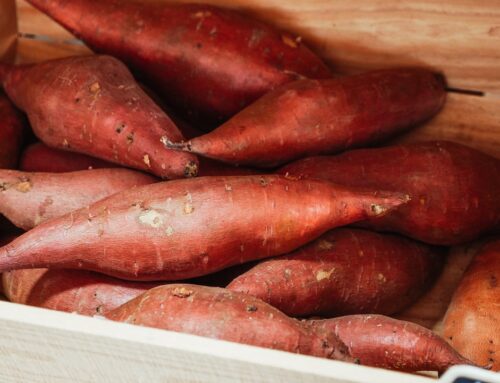
sweet potato hawkmoth – Agrius convolvuli
Agrius convolvuli is commonly known as the sweet potato hawkmoth or hornworm. Hawkmoths are big, with wing spans between 80–105 mm, grey to black with pink abdominal segments. Sweet potato weevil is the most destructive of all sweet potato pests as it destroys stems, leaves and fruit from the field to stored produce 1. The larvae are either bright green or dark muddy brown, but they are huge as well. An abdominal “horn” at the back end is an easy way to identify them. Since the larvae are so big, they have a big apatite and can demolish a plant, especially if there are lots of them. The are commonly found feeding on sweet potato, eggplant, capsicum, tomato, and legumes. The larvae are quickly spotted in large fields as they prefer young soft succulent leaves at the tip of plants.
Hawkmoths are controlled with deltamethrin, trichlorfon, triazophos or tralomethrin. The good news is that Hawkomth’s have natural enemies like Trichogramma spp., & Sycanus species. Tachinid fly’s also feed on the larvae. Some Braconid wasps also feed on the larvae. To control Hawkmoth organically, grow pollen and nectar plants along the roads and paths that attract predator insects that feed on the larvae. The ideal is to spray Bacillus thuringiensis var. kurstaki. The bacteria hardens in the mouth pieces of the larvae, preventing them to chew. It s an environmental safe way of control and does not harm any other insect or bird. Birds and other predator insects that feed on the larvae treated with Bacillus are not affected.
Should you be worried about Agrius convolvuli infestation. Not really, they don’t breed as fast as many other insects and are usually controlled by their natural enemies. They are also an easy target for birds due to their large size. Their natural enemies are egg parasites such as minute wasps, Trichogramma spp., while Sycanus sp. and tachinid flies feed on the larvae.
Featured image source: https://en.wikipedia.org/wiki/File:Agrius_convolvuli_-MHNT_CUT_2010_0_470–Gironde_France-_Male_dorsal.jpg. Photographer: Didier Descouens




